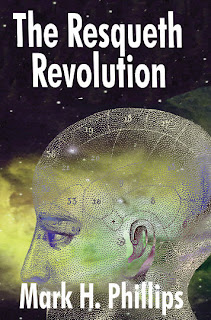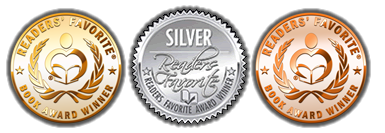Today’s guest blogger is Mark Phillips, author of The Resqueth Revolution, a gripping, highly recommended sci-fi story with thought-provoking social commentary. But forget the social commentary for now. Mark’s here to talk about writing action scenes. As the editor of this new release, I can attest to his skill. I kept getting so caught up in the action, I’d have to go back and read again to do my job. As a novelist, I learned a lot about writing action from his story. In this blog, Mark describes how writing action scenes is a lot like writing sex scenes. So sit up and take note.
How to Write Exciting Action Scenes – Part 1 of 2
Action scenes most often involve physical violent confrontation between characters in your story. They can also involve characters trying desperately to avoid a direct confrontation, as in a chase scene or even characters fighting to stay alive in a natural disaster—trying to ski out of the path of an avalanche say.
Action is often violent, but not all violence is action. A slasher film can be all about violence and suspense and yet have little or no action.
Good action scenes ought to be exciting. They should vicariously provoke within you the fight or flight response, raise your heart rate, make you breathe faster, get your adrenalin pumping, make you feel focused in the present moment and vibrantly alive, ready for anything.
Suspense is similar to action except the option of physical release is withheld. As our characters labor to defuse the bomb and agonize over cutting the red versus the blue wire, the suspense may have many of the same effects on us, but what makes it all the worse is that we are forced to just sit there with our character’s face inches from the bomb. We can’t save ourselves by violent physical exertion. Indeed, in novels or movies with both suspense and action, action is the release for suspense, much as major chords provide relief after prolonged stretches of minor chords and dissonance in music. It works the same in sexually explicit material: prolonged episodes of teasing find their release in raw sex.
I suspect that a great many writers who have trouble writing exciting action scenes also have trouble writing exciting sex scenes or avoid writing sex scenes altogether. On the other hand, if you already know how to write exciting sex scenes, the transition to action scenes will be all the easier.
The first rule of action writing is counterintuitive: slow everything down. In real life, action happens so damn fast that many of us have no time to react effectively. In movies action mostly happens in real time, coming at us in an overwhelming rush. But in writing, your job is to slow everything down.
Real life and movies are overabundant in details. All the most relevant details need to be in the written version, which means hundreds or even thousands of words for all those images and sounds. Your reader has to understand the setting and the relative positions of opponents. You must describe anything that may contribute to the outcome of the action before it comes into play—you can’t have your heroine slip on wet pavement without having previously told us about the rain. Tactical decisions that in real time are often nearly instantaneous and subconscious need an explicit examination; options need a thorough analysis. Then consider all the necessary expressions of thoughts and emotional details.
Martial artists and combat veterans often describe a subjective time dilation, where everything plays out as if in slow motion. Often, action scenes in movies use slow-motion literally to slow down the action. Viewers need time to notice and absorb all the details. Stephen Hunter and John Bainbridge in American Gunfight, a nonfiction account of the assassination attempt on President Truman, take nearly 350 pages to describe fully a gunfight that lasted 38 seconds in real time. The reader wants to know what everyone is doing, their positions, what they are thinking, what they are feeling at every moment. If your character uses a weapon, the reader will want to know how it feels in the hand, its heft and the sound it makes in use, exactly how it operates, and the exact devastating effects it has on the character’s opponent. That all takes time and your audience will give you their attention as long as you are making it possible for them to experience vicariously the exciting action.
Action scenes are really writing in microcosm. The reader wants to know how the story ends, but will delay that gratification so long as the journey to that resolution is enjoyable in itself. We must exploit the interplay between suspense and release, between arousal and orgasm, dissonance and harmonic resolution. The audience naturally wants us to resolve the conflict. They are desperate to know how it turns out, but at the same time they are reveling in the action itself and want it to go on forever. Like a pornographer, your job is to keep them desperately craving orgasm, but so thoroughly enjoying the details of the preorgasmic procedures that they simultaneously enjoy and regret the moment of release.
But, all that said, the final product cannot dawdle. You are not describing lilacs in bloom. Your prose must sweep the reader along as if caught in mad, crashing, unstoppable rapids. Use action words, the smaller the better, and short declarative sentences with only the most crucial adjectives. (The purple prose school of action writing revels in the adjective-laden poetry of it all—if the muse moves you toward this, don’t necessarily shut her up. I personally enjoy purple prose of the old pulp variety.) If grammar gets in the way of the natural flow, you may occasionally opt for sentence fragments. Without sacrificing essential detail, condense descriptions into the quickest, leanest prose possible. Think of a fast movement in music—more notes per bar and smaller notes than before. Think bodybuilding—you pack on the muscle mass but also lean out that muscle until definition is everything, until your prose is “ripped.”
What do you think about the sex/action scene analogy? What is your favorite action scene in a novel? Favorite action scene in a movie? (Commentors have a chance to win a copy.)
______________________________________
For the second half of this great article, stop in Thursday at The Dark Phantom. Tomorrow Mark will do an author interview at Katie Hines’ site.
Followers of the 2009 Resqueth Revolution blog tour will have two opportunities to win a copy.
- Everyone who leaves a comment on the tour will receive one drawing entry per comment per blog site. Two entries will be drawn at random, and the winners will receive a signed copy of The Resqueth Revolution.
- Everyone who answers all quiz questions correctly will be entered into a drawing for the grand prize — a signed copy of The Resqueth Revolution, a Resqueth pen, magnet and calendar, and a signed copy of Hacksaw, the first in the Eva Baum Detective series. Quizzes will post on March 21 and 27.
